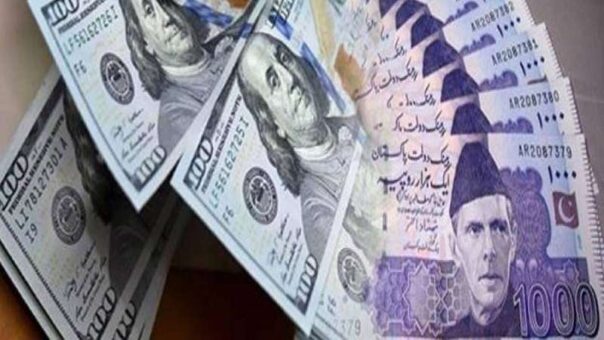Karachi, November 6, 2023 – The Pakistani Rupee (PKR) continued its downward trajectory, wrapping up its 11th consecutive decline at PKR 285.29 against the US dollar on Monday.
During this eleven-session slide, the rupee has lost roughly PKR 6.5, marking a significant 2.33 percent drop since its October 20, 2023 closing rate of PKR 278.79. The persistent depreciation of the rupee has raised concerns among financial experts, and various contributing factors have been identified.
On a daily basis, the rupee slipped by PKR 0.98 from the previous day’s closing rate of PKR 284.31 against the dollar in the interbank foreign exchange market.
A key driver of the rupee’s decline is the decreasing foreign exchange reserves of Pakistan. As per a State Bank of Pakistan (SBP) report, the country’s foreign exchange reserves dropped by $78 million in just one week, reaching $12.577 billion by the week ending October 27, 2023, down from the previous week’s $12.655 billion ending on October 20, 2023. This marks a significant contrast from the peak foreign exchange reserves in August 2021, which stood at a robust $27.2 billion.
Another substantial factor behind the rupee’s depreciation is the surging demand for imports. The recent economic recovery and increased import activities have put significant pressure on the rupee. As businesses expand and the economy rebounds, the need for foreign currency to finance imports has surged, resulting in heightened demand for the US dollar.
The ongoing depreciation of the Pakistani Rupee against the US Dollar necessitates vigilant oversight and the formulation of strategies to stabilize the currency. A weaker currency can have far-reaching consequences, impacting import costs, inflation rates, and the overall economic health of the nation. For businesses involved in international trade, fluctuations in exchange rates can significantly influence their profitability and global competitiveness.
An urgent concern that requires attention is Pakistan’s balance of payments. A persistent trade deficit could further strain foreign exchange reserves and the overall financial stability of Pakistan. To address these challenges, both the government and the central bank may need to consider implementing monetary and fiscal policies.
In conclusion, the continual depreciation of the Pakistani Rupee against the US Dollar underscores the necessity of addressing the underlying causes of this decline, such as foreign exchange reserves, trade balance, and increased import demand.
To ensure economic stability, a coordinated effort is essential to implement effective policies and strategies that bolster the currency and maintain Pakistan’s overall financial well-being. Collaborative efforts among government authorities, the central bank, and market participants are vital to navigate this situation and implement measures that safeguard the rupee’s value while promoting financial stability.
